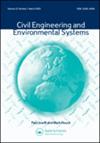技术调解与土木结构状况评估:以视觉系统为例
IF 1.1
3区 工程技术
Q3 ENGINEERING, CIVIL
引用次数: 3
摘要
本研究应用技术中介的理念来理解用于土木结构状态评估的基于视觉的系统如何将来自摄像机的图像输入转换为结构响应的输出。本研究的目的是了解基于视觉的系统在其用户和大部分人类无法感知的土木结构属性之间发挥的中介作用。这种系统的一个具体应用的案例研究被认为是一个具有基材(由数百万像素组成的图像帧)和痕迹(由其用户解释的建模时间历史)的响应性数字材料。内置的技术选择性决定了模型时间历史和现实中现有土木结构之间可能存在的差异,并归因于认知的不确定性。建模的时间历史放大了一个人对监测土木结构某一方面的体验,同时减少了对结构其他方面的体验。因此,为了防止人类的盲目性,工程师必须根据具体的理论前共享协议和例程来判断状态评估系统的输出。了解技术选择性和不同类型的人类失明之间复杂的相互作用可能会增加对这些系统如何成功用于土木结构状况评估的理解。本文章由计算机程序翻译,如有差异,请以英文原文为准。
Technological mediation and civil structure condition assessment: the case of vision-based systems
ABSTRACT This study applies the philosophy of technological mediation to understand how vision-based systems used for civil structure condition assessment transform input of images from cameras into output of structural response. The objective of this study is to understand the mediating role that a vision-based system plays between their users and properties of civil structures that are unperceivable in a great part by humans. A case study of a specific application of such a system is conceived as a responsive digital material with substrates (image frames consisting of millions of pixels) and traces (modelled time-histories to be interpreted by their users). Built-in technological selectivities determine possible differences between modelled time-histories and existing civil structures in reality and attribute to epistemic uncertainties. Modelled time-histories amplify a person’s experience of a certain aspect of the monitored civil structure while simultaneously reducing experiences of other aspects of the structure. Therefore, to prevent human blindness, engineers have to judge outputs of condition assessment systems in the light of specific pre-theoretical shared agreements and routines. Understanding the complex interplay between technological selectivities and different types of human blindness may increase understanding of how these systems can be used successfully in civil structure condition assessment.
求助全文
通过发布文献求助,成功后即可免费获取论文全文。
去求助
来源期刊

Civil Engineering and Environmental Systems
工程技术-工程:土木
CiteScore
3.30
自引率
16.70%
发文量
10
审稿时长
>12 weeks
期刊介绍:
Civil Engineering and Environmental Systems is devoted to the advancement of systems thinking and systems techniques throughout systems engineering, environmental engineering decision-making, and engineering management. We do this by publishing the practical applications and developments of "hard" and "soft" systems techniques and thinking.
Submissions that allow for better analysis of civil engineering and environmental systems might look at:
-Civil Engineering optimization
-Risk assessment in engineering
-Civil engineering decision analysis
-System identification in engineering
-Civil engineering numerical simulation
-Uncertainty modelling in engineering
-Qualitative modelling of complex engineering systems
 求助内容:
求助内容: 应助结果提醒方式:
应助结果提醒方式:


